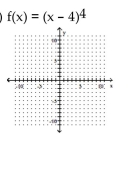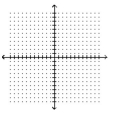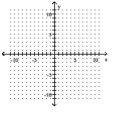A)
B)
C)
D)
Correct Answer

verified
Correct Answer
verified
True/False
Determine whether the statement is true or false. -
Correct Answer

verified
Correct Answer
verified
Multiple Choice
Find all rational zeros and factor f(x) .
A)
B)
C)
D)
Correct Answer

verified
Correct Answer
verified
True/False
Determine whether the statement is true or false. -
Correct Answer

verified
Correct Answer
verified
Multiple Choice
Find a polynomial of degree 3 with real coefficients that satisfies the given conditions. Zeros of 1,-2,3 and P(2) =8
A)
B)
C)
D)
Correct Answer

verified
Correct Answer
verified
Multiple Choice
Use the boundedness theorem to determine whether the polynomial function satisfies the given condition. -The polynomial f(x) 24x has no real zero greater than 3.
A) Yes, the boundedness theorem shows that the polynomial has no real zero greater than 3.
B) No, the boundedness theorem does not show that the polynomial has no real zero greater than 3.
Correct Answer

verified
Correct Answer
verified
Multiple Choice
Use Descartes' Rule of Signs to determine the possible number of positive real zeros and the possible number of negative real zeros for the function. -
A) ![]()
B) ![]()
C) ![]()
D) ![]()
Correct Answer

verified
Correct Answer
verified
True/False
Determine whether the statement is true or false. -
Correct Answer

verified
Correct Answer
verified
Multiple Choice
Find the equation of the axis of symmetry of the parabola. -
A)
B)
C)
D)
Correct Answer

verified
Correct Answer
verified
Multiple Choice
Find the zeros of the polynomial function and state the multiplicity of each. -
A) (multiplicity 3) , 0 (multiplicity 2) , 6 (multiplicity 1)
B) (multiplicity 3) , 6 (multiplicity 1)
C) -2 (multiplicity 1) , 2 (multiplicity 1) , 6 (multiplicity 1 )
D) -2 (multiplicity 3) , 0 (multiplicity 2) , 2 (multiplicity 1 ) , 6 (multiplicity 1 )
Correct Answer

verified
Correct Answer
verified
Multiple Choice
Find a quadratic function f having x-intercepts 3 and -4 and y-intercept -24 .
A)
B)
C)
D)
Correct Answer

verified
Correct Answer
verified
Multiple Choice
Sketch the graph of the polynomial function.
-

A) ![]()
B) ![]()
C) ![]()
D) ![]()
Correct Answer

verified
Correct Answer
verified
Multiple Choice
Sketch the graph of the polynomial function.
-
A) ![]()
B) ![]()
C) ![]()
D) ![]()
Correct Answer

verified
Correct Answer
verified
Multiple Choice
Use the intermediate value theorem for polynomials to show that the polynomial function has a real zero between the numbers given. - and 0
A) and
B) and
C) and
D) and
Correct Answer

verified
Correct Answer
verified
Multiple Choice
Find all rational zeros and factor f(x) . -
A)
B)
C)
D)
Correct Answer

verified
Correct Answer
verified
Multiple Choice
Sketch the graph of the rational function.
-

A) ![]()
B) ![]()
C) ![]()
D) ![]()
Correct Answer

verified
Correct Answer
verified
Multiple Choice
Sketch the graph of the parabola.
-

A) ![]()
B) ![]()
C) ![]()
D) ![]()
Correct Answer

verified
Correct Answer
verified
Multiple Choice
Find all rational zeros and factor f(x) .
A)
B)
C)
D)
Correct Answer

verified
Correct Answer
verified
Multiple Choice
The weight that a horizontal beam can support varies inversely as the length of the beam. Suppose that a 5-m beam can support 480 kg. How many kilograms can a 2-m beam support?
A) 0.0208 kg
B) 0.0008 kg
C) 1200 kg
D) 48 kg
Correct Answer

verified
Correct Answer
verified
Multiple Choice
Find all complex zeros of the polynomial function. Give exact values. List multiple zeros as necessary. -
A)
B)
C)
D)
Correct Answer

verified
Correct Answer
verified
Showing 101 - 120 of 517
Related Exams